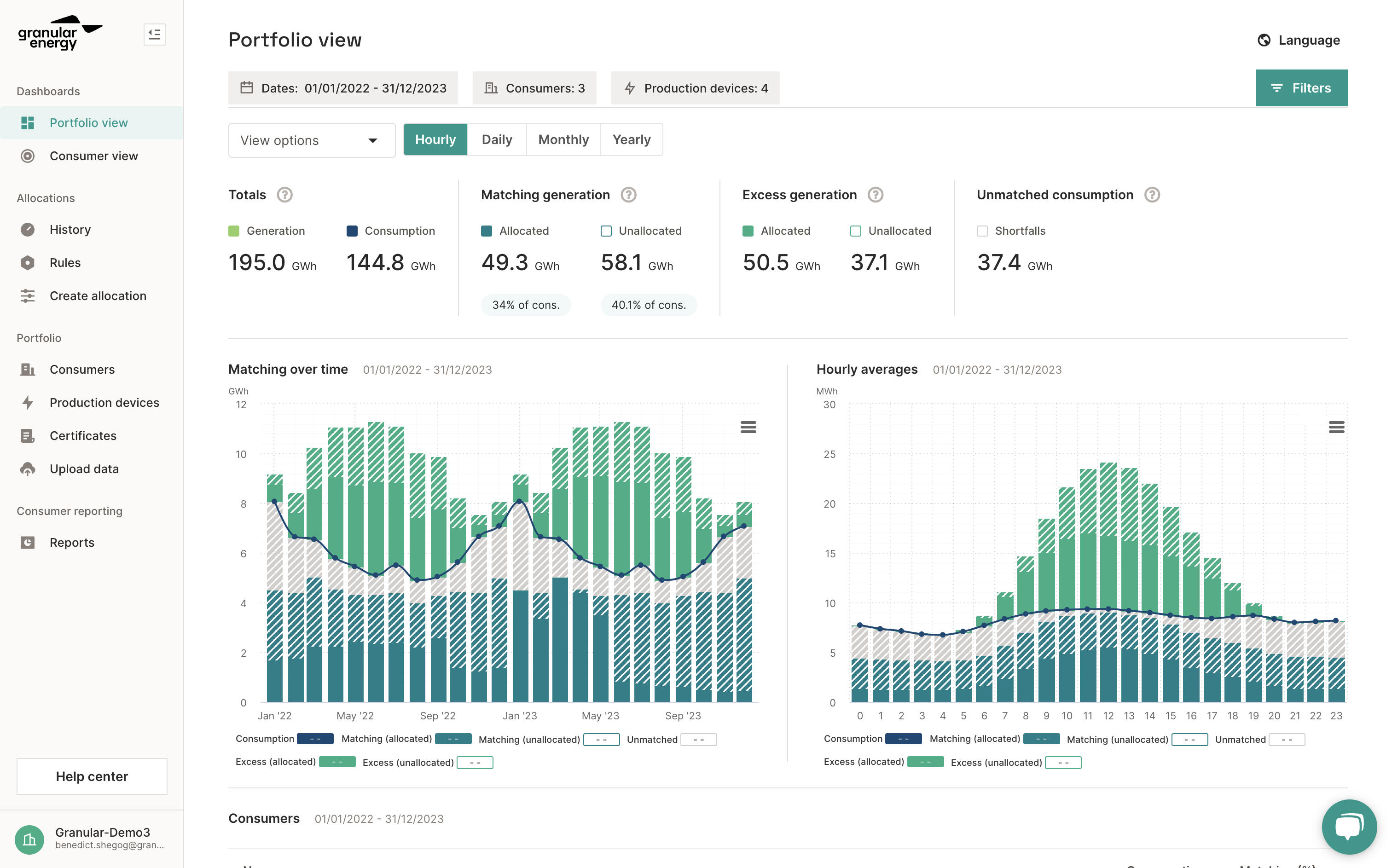The key metrics in the Granular Energy dashboards and reports can be analysed at different "time definitions", from a high-level annual view to a detailed "hourly" view.
Time definitions play a crucial role in measuring how well-aligned energy consumption is with energy generation. The Granular Energy platform allows suppliers and consumers to calculate key metrics under various definitions, from hourly to annual.
In mathematical terms, generation and consumption quantities are compared hour-by-hour when using an hourly time definition. In an annual time definition, production and generation are aggregated in yearly steps prior to comparison.
At Granular Energy, we calculate the alignment of production and consumption with the “matching score”. When measured on an annual time definition, matching scores are higher because it is comparatively easier to align total energy generation with energy consumption when aggregated to the year level. Conversely, when measuring energy production and generation on an hourly basis, aligning the two profiles is more difficult and results in lower matching scores.

Historically, suppliers have measured matching scores on an annual time definition (in the UK, the compliance period runs from 1 April to 31 March). However, energy suppliers and consumers are increasingly interested in measuring matching scores at more granular time definitions. Monthly, daily, or hourly time definitions provide suppliers and consumers with a more accurate understanding of the amount of energy being used which allows them to make more trustworthy claims.
More granular time definitions are also crucial to increasing the proportion of clean energy on the grid. They help us see imbalances between production and consumption, (which lower matching scores) and this information can guide us in implementing strategies like energy storage or demand response when clean energy is generated but not used. Similarly, it highlights the need for additional generation capacity or load management techniques during periods of high demand without enough clean energy available.
